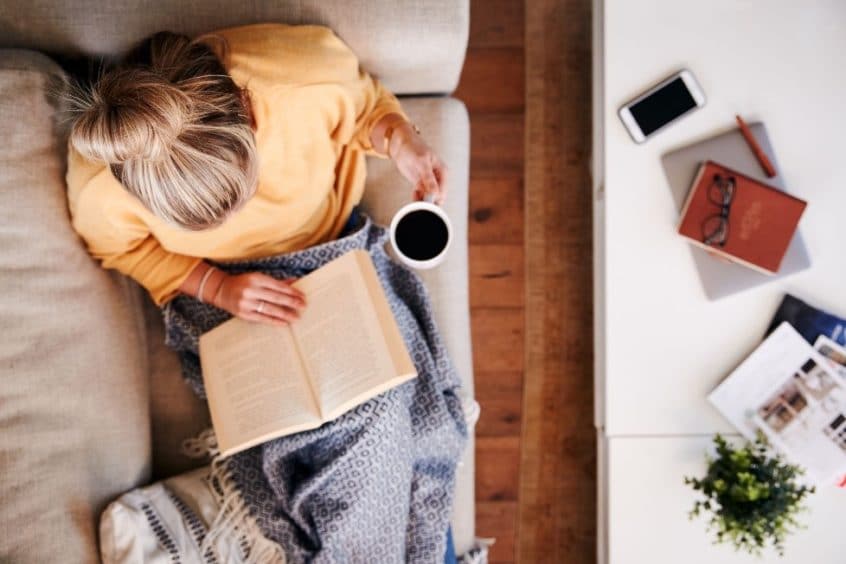What Does Self-Isolation Mean?
By now, you might have heard of the term, “self-isolation,” but what does self-isolating at home actually mean? All of the new information about the COVID-19 pandemic can be confusing. CK Public Health is here to provide you with the facts.
Simply put, self-isolation is when you have been instructed to physically separate yourself from others. The purpose is to prevent the spread of infection across our community. The more we can do early on to prevent passing on the virus, the slower the spread will be. Slowing the spread will help our healthcare system keep up. Without these precautions, we could see a large increase of infections all at once. This could mean that our healthcare system is not able to manage the volume of people who become infected. The 14 day isolation period is because of the amount of time it could take to develop symptoms.
There is no one-size-fits-all answer for self-isolation. The basic principles remain the same but everyone’s situation will be different and will depend on the reason for self-isolation. For example, someone who tested positive for COVID-19 will be in a different situation from someone who is practicing self-isolation to protect their health because of an existing chronic health issue. Someone who lives with others who are not self-isolating will be in a different situation from a family who has travelled and lives together. For information about who needs to self-isolate please check out the Prevent the Spread section of our website in the “Who should self-isolate?” tab at bottom. Call the COVID-19 intake line at 519-355-1071 x 1900 if you have questions about your unique situation.
The majority of COVID-19 symptoms can be managed at home. If someone is self-isolating at home and lives with others who are not self-isolating, they will need to be separated from others in the household as much as possible. This will prevent spreading the infection within the home. It is also important for others in the home to avoid going into the space being used for isolation. Self-isolation at home includes:
- when possible, being in a separate room or space away from where others spend time
- sleeping alone if you can
- using a separate bathroom if there is one
- making sure any shared spaces in the home have good airflow (e.g., open windows)
- avoid sharing toothbrushes, cutlery, dishes, drinks, towels, bed linens, etc.
- If it is not possible to be in a separate room, at least 2 metres of space should be kept between the individual who is self-isolating and others in the household at all times.
What activities should be avoided during self-isolation?
Self-isolation also means staying home. In other words, anyone in self-isolation should avoid the following:
- going to work, school, or other public places
- using public transit, taxis, or rideshares
- hanging out with friends or family
- going to the store
- going through a drive-through
- stopping at a gas station
CK Public Health or the individual’s primary care provider will let the individual know when they no longer need to self-isolate. This is done on a case by case basis.
In addition to avoiding trips in the community, people who are in self-isolation should also limit visitors coming to their home. It is really important to avoid being around older adults, and people with chronic health conditions (e.g., diabetes, lung problems, weakened immune system). Not being able to leave home can make it challenging to get the things we need for daily living. Visit let’s talk food CK for some suggestions on getting food and supplies while self-isolating. If getting supplies delivered, try to pay online or over the phone and have the items dropped off on the doorstep. You could also ask a family member or friend to leave supplies in a separate location in the home while keeping distance in another area or room.
Self-Isolation and Hygiene
Physical Distance
- If staying in a separate room or area of the home is not possible, keep at least 2 metres of space in between yourself and others at all times.
Hand Hygiene and Cough Etiquette
- Wash your hands often with soap and water for at least 20 seconds.
- Cover coughs and sneezes with your elbow and wash hands after.
Cleaning
- Clean all high-touch surfaces like counters, toilets, sinks and tap handles, tables, doorknobs, light switches, remotes, phones, and bedside tables.
- Use a diluted bleach solution (2 teaspoons of bleach to 4 cups of water) or other household disinfectant with a drug identification number or DIN.
- Wear disposal gloves while cleaning if possible and wash hands after.
Dishes and eating utensils:
- Dishes and eating utensils should be cleaned with dish soap and hot water after each use.
- You can also use a dishwasher with a drying cycle.
Laundry:
- Clothing, towels, and bedding can be cleaned using regular laundry soap and water and do not need to be separated from other household laundry.
- Avoid shaking any laundry before it is washed.
- Wash hands after doing any laundry for someone who is self-isolating.
Waste:
- Throw used tissues in a lined waste bin and wash hands after using tissues and emptying the waste bin.
- All waste can be bagged in a regular plastic bag and thrown out with regular household waste.
- Wash hands after dealing with any waste.
Resources

